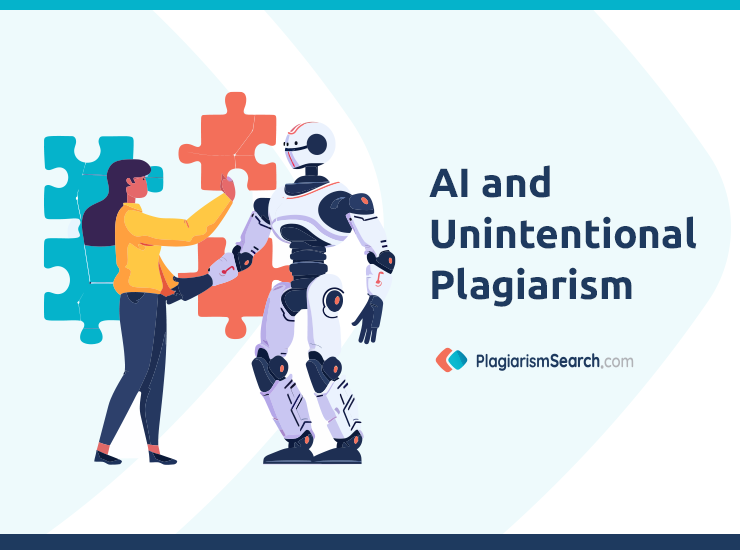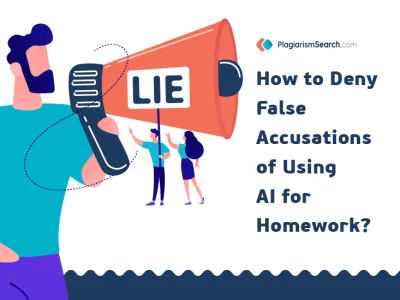
Differentiating Intentional and Unintentional Plagiarism in Academic Writing
We all live in the age of amazing information technologies and digital transformations which cause a great number of issues in the area of ethical integrity. Plagiarism is gradually penetrating every sphere and it is actually the worst phobia of writers all over the world. Even unintentionally, they may copy some idea and undermine their credibility, ruining their career and future. Still, there is a rather paradoxical relation between AI and plagiarism. A widely-accepted view is that ChatGPT and other tools are the sources of laziness and cheating in students’ works and various types of writing, but here is the excellent news! Not only writing techniques can help you avoid plagiarizing. AI plagiarism detection tools are outstanding assistants in detecting and even preventing plagiarism to maintain academic integrity.
AI as the Best Detective in the Field of Plagiarism
Does AI plagiarize? Yes, it does! Does it help in detecting plagiarism? It surely does. That is the reason why schools, universities, publishing houses, bloggers, and writers have realized that their arsenal of plagiarism detection tools is not complete without AI. Such services as PlagiarismSearch.com are perfect when it goes about intentional plagiarism and copying from different resources, including the use of AI. However, when it goes about well-hidden cheating and cases of sophisticated cases, including unintentional plagiarism, nothing can be better than the latest machine tools.
What can AI plagiarism detection tools do?
- scan huge databases of content
- identify incorrect citations
- detect duplications
- trace copied text
- show AI-generated content
Technologies have made it possible to ensure that the writers comply with the standards of academic integrity and they can be trusted.
Is Using ChatGPT Plagiarism?
- Do you plagiarize if you submit the paper composed by ChatGPT?
Although you do not steal from a human author, you plagiarize as much as if you have submitted an article from an encyclopedia as your own. Using ChatGPT is fine only if you do research or collect ideas before you start actual work on the paper.
- Do you plagiarize if you use AI plagiarism changer?
You have thought a lot about the ways of how to avoid plagiarism and be safe from academic punishments. For sure, you have considered an option of paraphrasing the work already composed by either a human author or machine. If you do paraphrasing after thorough analysis of a certain source to present only the most essential concepts and ideas, it is a great skill you should keep developing. However, if you make use of an AI plagiarism changer that does all your work, you make it complicated for an instructor to detect cheating but you do cheat! It is a kind of the most sophisticated plagiarism which is equal to mere copying of the source.
- Do you plagiarize if you use ChatGPT or other AI tools to help you with your own writing?
The line between the acceptable and unacceptable way of using AI tools is frequently rather blurred. What can you do to facilitate your writing but at the same time not to cross the line between originality and plagiarism?
- Brainstorming
Being tired or not motivated to do your task, you may be short of ideas. Instead of wasting hours on mere waiting, you can try to get a bunch of hints from ChatGPT and get down to work.
- Validating answers
Feeling insecure about the composed paper, you can request for advice from AI tools to figure out how you can improve your writing or which ideas you can add to the text. Do not forget that you cannot rely on AI only! All the answers should be double checked.
- Drafting an outline
You can get several variants of possible structure your future paper can have in the framework of your strict requirements in terms of keywords, headings, and preferred topics to cover.
- Using different ways to avoid plagiarism
To make sure that the produced content is plagiarism-free, you can use an AI plagiarism detection tool for the analysis of the used language model. Thus, you will know if the text contains paraphrased ideas, copied parts, or AI-generated passages. The language and grammar used by AI tools are getting more and more natural; so, even the questions ‘what is AI generated content?’ and ‘how to trace it in writing?’ are getting more and more challenging.
How to Check for Plagiarism Done Unintentionally
Writing a new text, one can definitely replicate certain phrases and ideas even without any intention to plagiarize. ChatGPT can check such content to trace all cases of cheating and unintentional copying with the help of the following methods:
- Comparing texts
Referring to a huge database of already available texts, ChatGPT identifies similarities between a new text and existing ones. The newest algorithms make it possible to trace the minute details and not to miss any clue that may certify plagiarism.
- Analyzing style
AI tools can specify all matches between the language patterns and writing style of a new text and those of previously written ones. In addition to natural language processing techniques, they use machine techniques which detect all the similarities.
- Checking sources
Having access to an enormous database of references and sources, ChatGPT can check any text for accuracy in in-text citations and similarities in quotations.
- Evaluating correspondence to the given prompt
- The user provides all the guidelines and prompts and AI tools check whether the text is written according to the given requirements.
At present, everybody needs an insight into how to check for AI plagiarism and differentiate between original and copied content. Without automating plagiarism detection, it is impossible now to deal with lots of content created daily. However, when it goes about checking specific texts, it is highly recommendable to use manual review as a supplementary aspect of machine check. The final judgment should always be made by a human expert to avoid false accusations and technical mistakes. The check can be automated at the highest level of efficiency, but without understanding of the context and nuances of every case, it is challenging to make a well-grounded conclusion about the originality of a written text.



